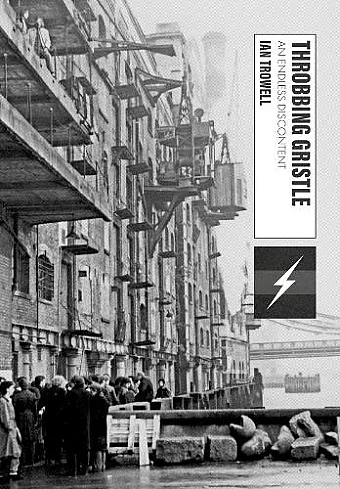In 1976 the British band Throbbing Gristle emerged from the radical arts collective COUM Transmissions through core members Genesis P-Orridge and Cosey Fanni Tutti, joined by Hipgnosis photographer Peter Christopherson and electronics specialist Chris Carter. Though having performed previously in more low-key arts environments, their major launch coincided with the COUM retrospective exhibition Prostitution at London’s ICA gallery, showcasing and contextualising an array of challenging objects from COUM’s various actions in performance art and pornography. In a deliberately curated strategy inviting press, civic and arts dignitaries, extravagant followers of the nascent punk scene and music journalists, the band created an instant controversy and media panic that tapped into the restrictive climate and encroaching conservatism of late 1970s Britain. Any opportunities that were being explored by a formative punk ethos and movement around sex, censorship and transgression were amplified and exposed by Throbbing Gristle and Prostitution. An outraged Member of Parliament Nicholas Fairbairn took the bait and called the ensemble the ‘wreckers of civilisation’, providing the suitable newspaper headline that would be followed a month later by ‘the filth and the fury’ as the Sex Pistols uttered strong profanities on live television.
The switch from COUM to Throbbing Gristle encompassed a primary mode of expression in making music as opposed to art, to further coincide with the energy of the nascent punk scene. The band quickly developed a radically deviant and challenging reputation through pushing the punk format past its strictures in terms of lyrical themes, amateurism, and considerations of what constitutes music. Through a handful or record releases on their own label Industrial Records, and a sporadic string of live performances, the band nurtured a strong and devoted following including key journalists and fanzine editors of the punk and post-punk scenes such as Jon Savage and Sandy Robertson. The band’s style of exploring harsh pre-recorded sounds, samples of disconcerting narrative and conversation, and feeding all sounds through messy electronic processing devices gave rise to the title industrial music. This was further buttressed by performing a strictly timed set of one hour, and adopting a non-rockstar mode by appearing disinterested and preoccupied with electronic devices. Having given a name and impetus to the industrial music scene, many of their followers and fans formed bands in later...
'Ian Trowell’s book is a marvellous trawl through the alternative and underground music of the late 1970s and early 80s, hung on the story of Throbbing Gristle; more specifically, a number of their live concerts, or performance events, around the UK. [...] Why do I say this book is marvellous? Well, for the way it genuinely captures the time it describes [...] and for how Trowell uses the different locations of the TG gigs – London, Wakefield, Derby, Sheffield and others – to explore what was going on around the UK, recognising that whilst punk may have expired in London, it was only just happening elsewhere; also, that many different kinds of what we call post-punk were happening.'
-- Rupert Loydell, International TISBN: 9781789388299
Dimensions: unknown
Weight: 579g
288 pages
